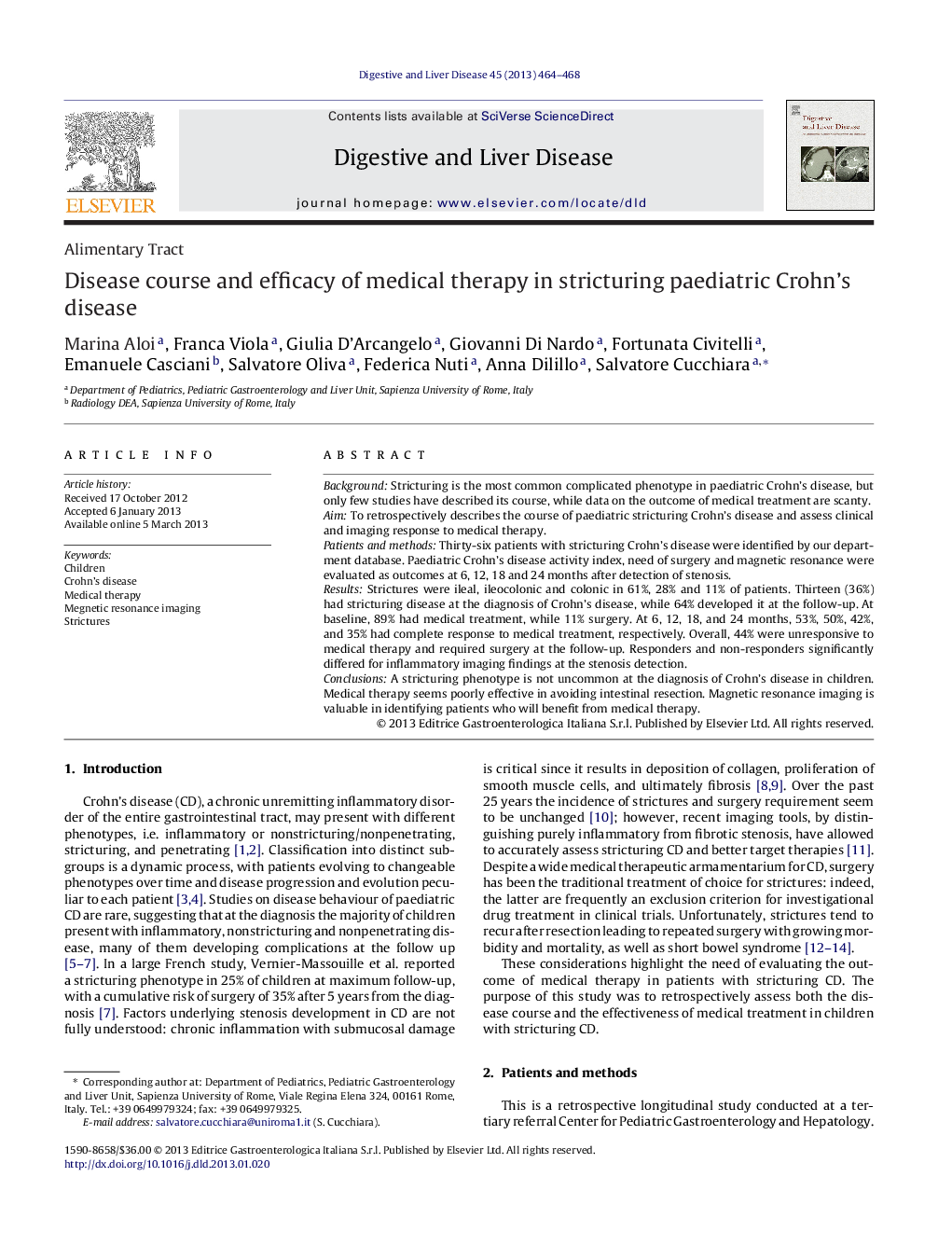| Article ID | Journal | Published Year | Pages | File Type |
|---|---|---|---|---|
| 3261962 | Digestive and Liver Disease | 2013 | 5 Pages |
BackgroundStricturing is the most common complicated phenotype in paediatric Crohn's disease, but only few studies have described its course, while data on the outcome of medical treatment are scanty.AimTo retrospectively describes the course of paediatric stricturing Crohn's disease and assess clinical and imaging response to medical therapy.Patients and methodsThirty-six patients with stricturing Crohn's disease were identified by our department database. Paediatric Crohn's disease activity index, need of surgery and magnetic resonance were evaluated as outcomes at 6, 12, 18 and 24 months after detection of stenosis.ResultsStrictures were ileal, ileocolonic and colonic in 61%, 28% and 11% of patients. Thirteen (36%) had stricturing disease at the diagnosis of Crohn's disease, while 64% developed it at the follow-up. At baseline, 89% had medical treatment, while 11% surgery. At 6, 12, 18, and 24 months, 53%, 50%, 42%, and 35% had complete response to medical treatment, respectively. Overall, 44% were unresponsive to medical therapy and required surgery at the follow-up. Responders and non-responders significantly differed for inflammatory imaging findings at the stenosis detection.ConclusionsA stricturing phenotype is not uncommon at the diagnosis of Crohn's disease in children. Medical therapy seems poorly effective in avoiding intestinal resection. Magnetic resonance imaging is valuable in identifying patients who will benefit from medical therapy.
